Shrine of Our Lady of Europe on Europa Point, Gibraltar, a 600 year journey to bring her home
By Nick Nutter | Updated 15 May 2022 | Gibraltar | Places To Go |
Login to add to YOUR Favourites or Read Later
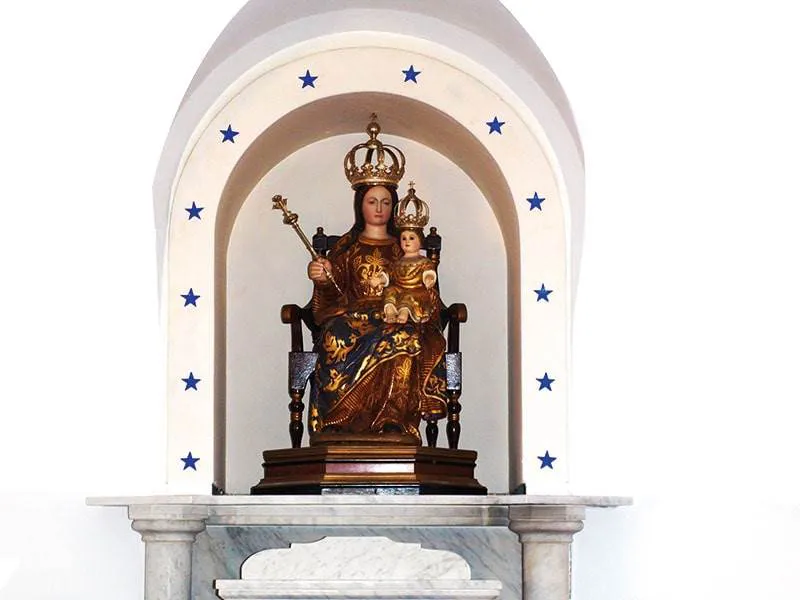
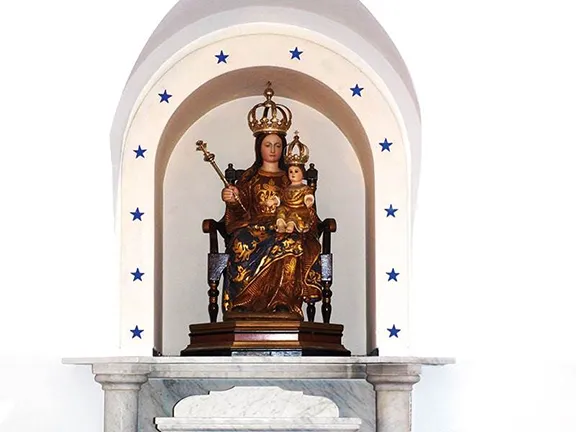
Our Lady of Europe
On the 7th October 1967, the statue of Our Lady of Europe was carried into the Shrine of our Lady at Europa Point in Gibraltar, thereby completing an eventful journey that began almost 600 years previously.
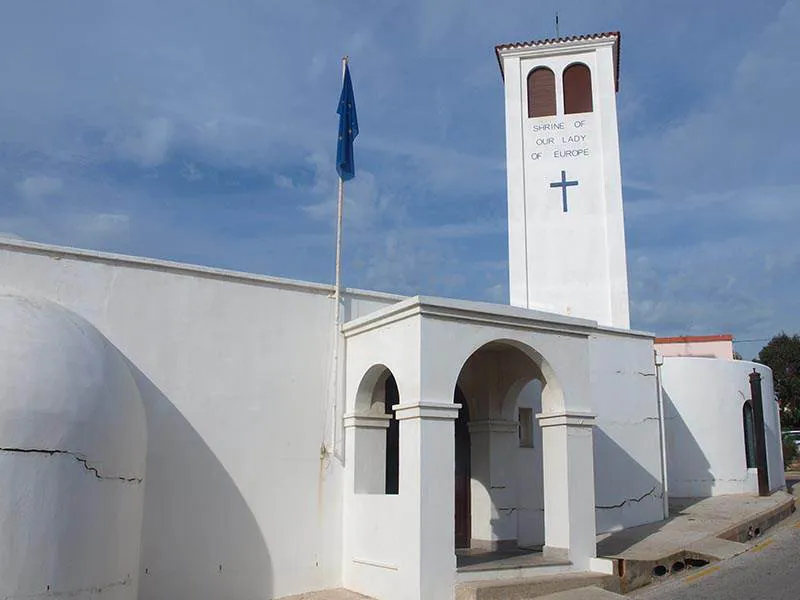
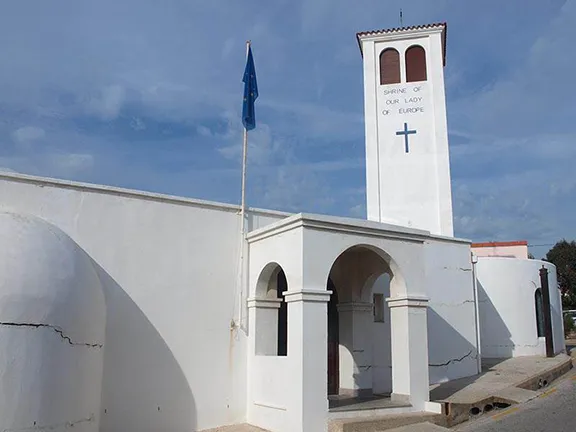
Shrine at Europa Point
In 711 AD the Moors invaded Iberia and rapidly took over the greater part of the Peninsula. The initial landing was in the vicinity of the hill then known as Calpe, probably in what is now known as the Bay of Gibraltar or Algeciras Bay depending on which chart is examined. Calpe was renamed Gibel Tarik, ‘the mountain of Tarik’, to honour the Muslim commander of the invading forces Tarik Ibn Zayid. Soon after the occupation, a mosque was built at Europa Point.
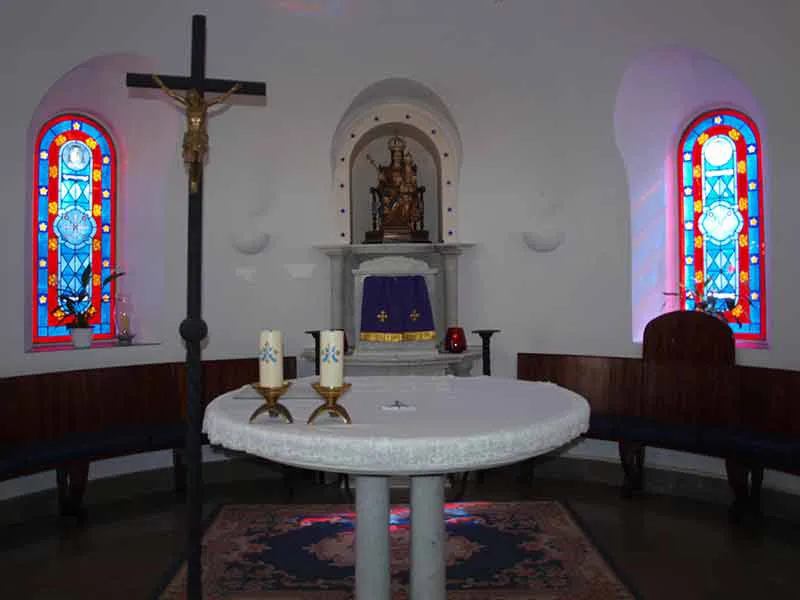
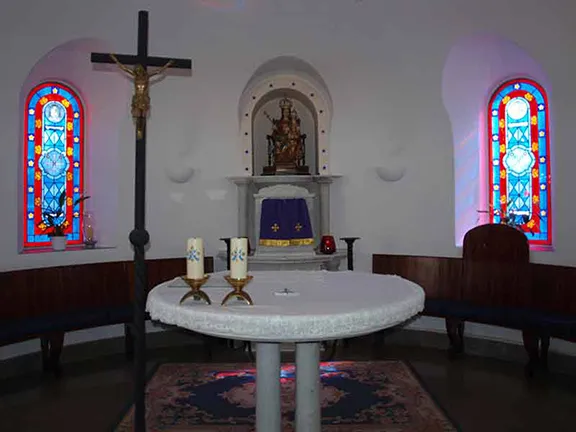
In 1309 Gibraltar was taken from the Moors by King Ferdinand IV of Castile. The mosque was converted into a Christian shrine, then in 1333 the Moors once again took possession of Gibel Tarik and the shrine reverted to being a mosque. In 1462 Juan Alonso de Guzmán, 1st Duke of Medina Sidonia finally restored Gibraltar to the Spanish Crown and the mosque once again became a shrine.
In 1415, the Portuguese King John I captured Ceuta, just 20 kilometres south, across the Strait from Gibraltar. In 1421, his son, Henry the Navigator, sent a Holy Virgin statue to a shrine there that was consecrated to Our Lady of Africa. There is some dispute as to whether the shrine on Gibraltar was consecrated to Our Lady of Europe during the first period of Spanish occupation, 1309 to 1333, or the second, after 1462. Either way, by the late 15th Century, both Pillars of Hercules had become shrines consecrating their respective continents to Our Lady.
Soon after 1462, a chapel was built over the remains of the mosque and a statue of the Virgin and Child was installed. The statue was 61 centimetres tall and depicted a seated Virgin with the child Jesus on her lap. Both were crowned and the Virgin held a sceptre. The whole area of the shrine became known as The Shrine of Our Lady of Europe.
The shrine was revered by mariners who came ashore and left votive offerings for a safe voyage; a practice started at Gibraltar by the Phoenicians over two thousand years earlier who used Gorham’s Cave for a similar purpose. The Middle Age mariners also left a supply of oil for the lamp in front of the statue and for the lamp that shone through a window in the tower above the chapel. The light from the tower was visible from the sea and acted as Europa Point’s first lighthouse.
Following the reconquest, completed in 1492, many Muslims were ejected from Spain and joined the Barbary pirates that operated from the shores of North Africa from Morocco to Tunisia. Raids on the Spanish coast became frequent and in 1540 Gibraltar was attacked and sacked on one such foray. Hundreds of Gibraltarians were taken as slaves and hostages, and the shrine itself was looted. Although damaged, the statue was left behind. It was later repaired in Seville and brought back to Gibraltar.
On the 3rd August 1704, a combined Anglo-Dutch fleet commenced firing on the town and the fortifications of Gibraltar in preparation for a landing. Many of the townspeople took refuge in the Shrine of Our Lady of Europe. A British contingent landed at Rosia Bay and headed to the shrine. There they captured the civilians and, according to Juan Romero de Figueroa, the priest of the parish of St. Mary the Crowned who noted in the Baptismal Register, looted, ‘…twelve silver lamps, candlesticks, lecterns, crowns, gems and consecrated vessels, the clothes of many families, who had withdrawn there, and when there was nothing else to rob, they broke off the head of the statue which is so venerated in Spain and the child Jesus and threw it among the stones’.
The head and the remaining parts of the statue floated into the Bay of Gibraltar where they were found by a fisherman. He recovered them from the water and took them to Juan Romero de Figueroa who, in turn, smuggled the parts out of Gibraltar when he and most of the other inhabitants chose to live in Spain under Spanish rule. The remains of the statue were placed in the Chapel of St. Bernard in Algeciras and that chapel was dedicated to Our Lady of Europe. The original shrine, at Europa Point, passed into military hands. It was severely damaged during the Great Siege (1779-1783) and subsequently demolished.
Meanwhile, a replica of the statue had been made and installed in the Cathedral Of St. Mary the Crowned and St. Bernard on Main Street, Gibraltar. Sometime after 1927 Bishop of the Diocese of Gibraltar, Richard Joseph Fitzgerald put the replica into storage, where it was forgotten for almost 40 years. He replaced it, on the left-hand side altar with a different statue. The reproduction was rediscovered in 1965 by Charles Caruana, later Bishop of Gibraltar, who was then responsible for the sacristy. In 1986, after restoration, it was put back into the left-hand altar space, where it remains. Returning to the original statue, still in the Chapel of St. Bernard in Algeciras.
In the early 1860s, John Baptist Scandella, the Vicar Apostolic of Gibraltar, petitioned for the return of the original statue from Algeciras. An agreement was reached by Scandella, the Bishop of Cádiz and the Primate of Spain by which the original would be returned to Gibraltar if a copy were made to replace it in Algeciras. The replica was carved in Seville, and at the same time, the original was repaired. The original statue arrived back in Gibraltar in 1864.
The site of the original shrine, in 1864, was held by the military, so the statue was housed in the Loreto Convent on Main Street whilst a fundraising campaign was initiated to purchase a site on Engineer Road. The new chapel included an altar donated by Pope Pius IX (1846 – 1878), who, incidentally, was the longest reigning, elected pope in the history of the Catholic Church. The statue sat on Pope Pius’s altar until World War II when it was returned to the Cathedral for safekeeping. For the duration of the war, the Cathedral unknowingly housed two statues of Our Lady of Europe. After the war, the statue was placed in the church closest to Europa Point, St. Joseph Parish Church. The building erected on the site of the shrine became a military storage facility until 1959 when, no longer required, the military decided to demolish it.
Bishop John Healy intervened, and in 1961 the building was ceded to the Catholic diocese. Following restoration, the first mass in 258 years was held at the shrine on the 28th September 1962. On the 7th October 1967, the statue of Our Lady of Europe finally returned home to the Shrine.
That could have been her last journey but, in 2002, Bishop Caruana took the statue of Our Lady of Europe to Rome where Pope John Paul II blessed and crowned her. Yet another replica was given to the Pope as a gift.